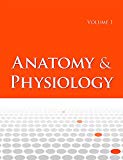
Watch this video (http://openstaxcollege.org/l/flexext) to learn more about the flexion and extension of the knee, as the femur both rolls and glides on the tibia to maintain stable contact between the bones in all knee positions. The patella glides along a groove on the anterior side of the distal femur. The collateral ligaments on the sides of the knee become tight in the fully extended position to help stabilize the knee. The posterior cruciate ligament supports the knee when flexed and the anterior cruciate ligament becomes tight when the knee comes into full extension to resist hyperextension. What are the ligaments that support the knee joint?
Want to see the full answer?
Check out a sample textbook solution
Chapter 9 Solutions
Anatomy and Physiology by OpenStax
Additional Science Textbook Solutions
Physics for Scientists and Engineers: A Strategic Approach, Vol. 1 (Chs 1-21) (4th Edition)
Campbell Biology in Focus (2nd Edition)
Organic Chemistry (8th Edition)
Campbell Biology (11th Edition)
Biological Science (6th Edition)
Microbiology: An Introduction
- Using information from the primary literature (several references have been provided as a starting point below) please answer the following question: Based on your review of the literature on rewilding, what are the major scientific pros and cons for rewilding? Please note that the focus of this assignment are the (biological) scientific issues associated with rewilding. As will be discussed in class, there are a number of non-scientific issues involved or implicated in rewilding, all ultimately affecting the public acceptability of rewilding. Although these issues are important – indeed, critical – in this assignment you should focus on the biological science issues and questions. Details: You must enumerate at least two pros and at least two cons. Your answer should be no more than 500 well-chosen words, excluding references. Think carefully about how best to organize and structure your answer. Aim for high information density: say a lot, but say it succinctly. Recall Nietzche’s…arrow_forwardUsing information from the primary literature (several references have been provided as a starting point below) please answer the following question: Based on your review of the literature on rewilding, what are the major scientific pros and cons for rewilding? Please note that the focus of this assignment are the (biological) scientific issues associated with rewilding. As will be discussed in class, there are a number of non-scientific issues involved or implicated in rewilding, all ultimately affecting the public acceptability of rewilding. Although these issues are important – indeed, critical – in this assignment you should focus on the biological science issues and questions. Details: You must enumerate at least two pros and at least two cons. Your answer should be no more than 500 well-chosen words, excluding references. Think carefully about how best to organize and structure your answer. Aim for high information density: say a lot, but say it succinctly. Recall Nietzche’s…arrow_forwardNow draw a rough sketch of what the control data might look like if in addition to the specific binding, there was also a considerable amount of nonspecific binding (again using a normal dose/response curve) (do % total bound ligand vs concentration)arrow_forward
- What are functions of cuboidal cells in the kidney? Select all that apply. Concentration of gases Dilution of chemicals Secretion of molecules Nutrition to tissues Support of tissues Absorption of moleculesarrow_forwardquestion1 In plants, epithelial tissue is only found as the outermost cell layer and acts as a barrier. In humans, epithelial tissue is found inside the body as well as on the surface. What function(s) does/do epithelial tissue carry out in humans? Select all that apply. Waste storage Filtration Oxygen transport Protection Diffusion Osmosis Absorptionarrow_forwardWhat words best describes this organism? a. Unicellular/nonmotile Ob. unicellular/motile c. colonial/nonmotile d. colonial/motile e. multicelluar O f. siphonous g. none of thesearrow_forward
- Identify the phylum or class. a. Euglenophyta b. Dinoflagellata c. Bacillariophyceae d. Oomycetes e. Phaeophyceae O f. Myxomycota g. Xanthophyceae ○ h. Chrysophyceae i. Dictyosteliomycota O j. Rhodophyta Ok. Chlorophyceaens I. Charophyceaensarrow_forwardWhat is produced inside the indicated structure (Fucus). a. eggs O b. antheridia ○ c. sperm d. zygotes e. none of thesearrow_forwardGreen Algae, as a group, is actually paraphyletic with one subgroup more closely related to higher plants than the other. Which of the following green algae groups is more closely related to higher plants: a. Charophyceans b. Chlorophyceans c. Rhodophyta d. Xanthophyceansarrow_forward
- A single-celled green algal genus that is motile with 2 flagella, has a cup shaped chloroplast, and an eyespot: a. Volvox b. Chlamydomonas c. Euglena d. Codiumarrow_forwardA[n] ___ is produced by members of the Myxomycota when there is a lack of moisture. a. plasmodiocarp b. aethalium c. sclerotium d. plasmodiumarrow_forwardWhich of the following is not true about the life-cycle of Fucus. a. 8 eggs per oogonium b. 64 sperm per antheridium c. eggs are flagellated d. sperm are flagellatedarrow_forward
 Fundamentals of Sectional Anatomy: An Imaging App...BiologyISBN:9781133960867Author:Denise L. LazoPublisher:Cengage Learning
Fundamentals of Sectional Anatomy: An Imaging App...BiologyISBN:9781133960867Author:Denise L. LazoPublisher:Cengage Learning Medical Terminology for Health Professions, Spira...Health & NutritionISBN:9781305634350Author:Ann Ehrlich, Carol L. Schroeder, Laura Ehrlich, Katrina A. SchroederPublisher:Cengage Learning
Medical Terminology for Health Professions, Spira...Health & NutritionISBN:9781305634350Author:Ann Ehrlich, Carol L. Schroeder, Laura Ehrlich, Katrina A. SchroederPublisher:Cengage Learning Anatomy & PhysiologyBiologyISBN:9781938168130Author:Kelly A. Young, James A. Wise, Peter DeSaix, Dean H. Kruse, Brandon Poe, Eddie Johnson, Jody E. Johnson, Oksana Korol, J. Gordon Betts, Mark WomblePublisher:OpenStax College
Anatomy & PhysiologyBiologyISBN:9781938168130Author:Kelly A. Young, James A. Wise, Peter DeSaix, Dean H. Kruse, Brandon Poe, Eddie Johnson, Jody E. Johnson, Oksana Korol, J. Gordon Betts, Mark WomblePublisher:OpenStax College Human Physiology: From Cells to Systems (MindTap ...BiologyISBN:9781285866932Author:Lauralee SherwoodPublisher:Cengage Learning
Human Physiology: From Cells to Systems (MindTap ...BiologyISBN:9781285866932Author:Lauralee SherwoodPublisher:Cengage Learning





